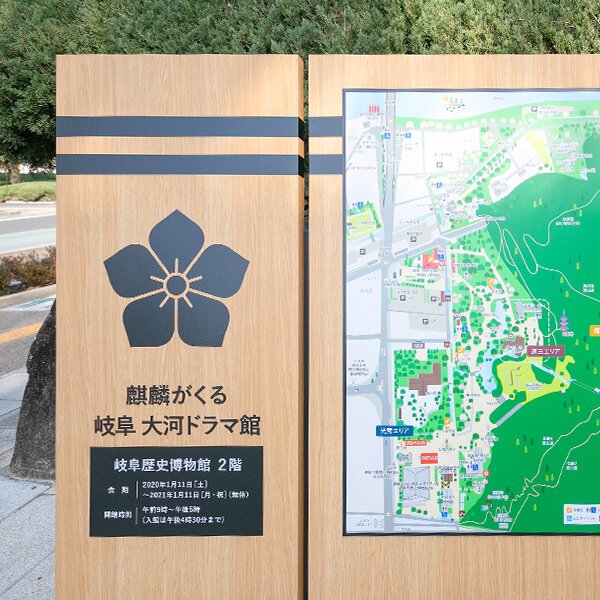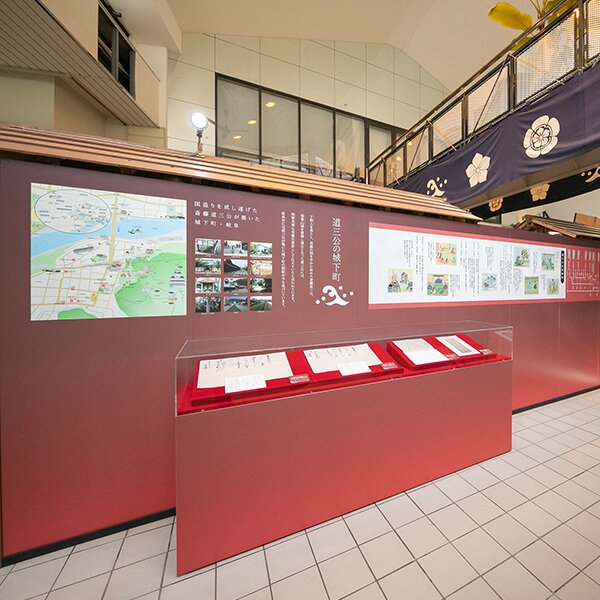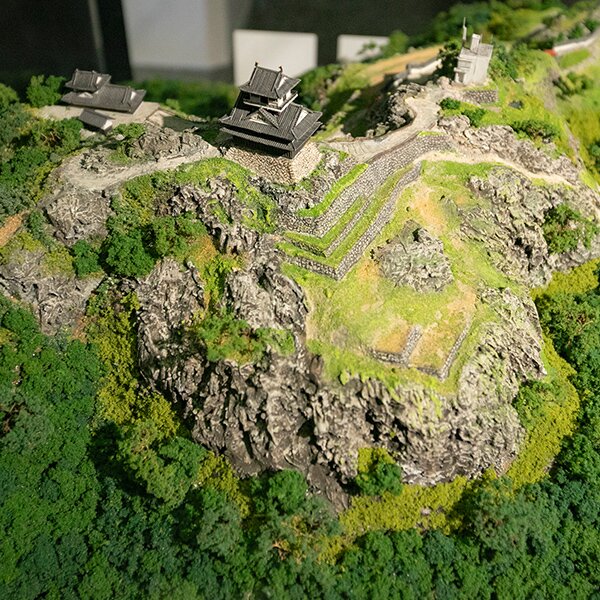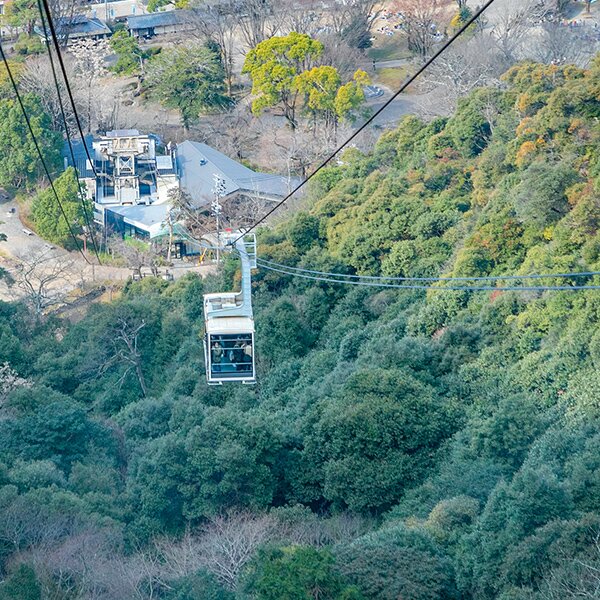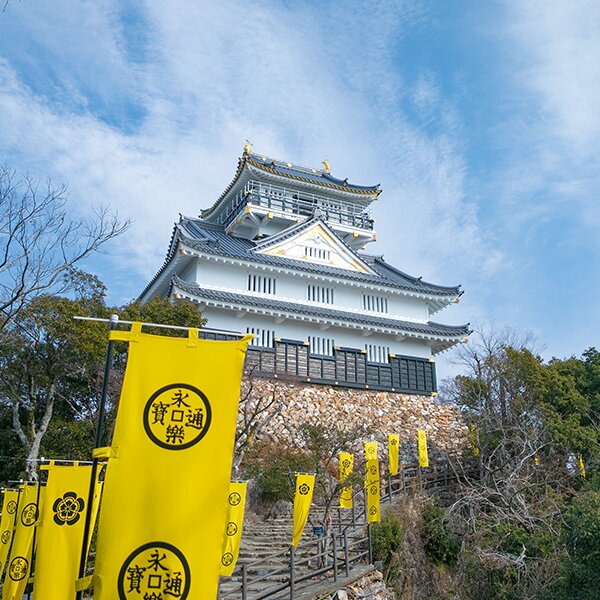Welcome to the Awaiting Kirin Gifu Taiga Drama Museum’s website
The annual Taiga dramas that NHK has been broadcasting for over 50 years, which showcase the lives of Japanese historical figures, have heightened interest in the locations related to the story and main characters throughout the years after they were featured. The 2020 Taiga drama “Awaiting Kirin” features the Sengoku period military commander Akechi Mitsuhide as the main character and illustrates life in Gifu, including famous figures related to Gifu such as Saito Dosan and Oda Nobunaga.
Characters related to Gifu City

Akechi Mitsuhide (owned by Hontoku-ji Temple)
Photograph provided by Kishiwada City Department of Tourism
Akechi Mitsuhide
Mitsuhide was a Sengoku period military commander said to have been born in the year 1528 in Mino Province (now Gifu Prefecture).
He was discovered by Saito Dosan, who made him a vassal, and he played an important role as Oda Nobunaga proceeded in his plans to take over all of Japan. During this time, Mitsuhide acted as a mediator between General Ashikaga Yoshiaki and Nobunaga, and thanks to his many achievements and contributions, he became a closely-trusted chief vassal to Nobunaga. However, in 1582, he turned against his master Nobunaga and incited the Honno-ji Incident, but he failed to defeat Hashiba Hideyoshi (also known as Toyotomi Hideyoshi) at the Battle of Yamazaki, and thereafter his infamous reputation is that of being a traitor and a short-lived ruler.
Despite this reputation, he was also an excellent castle builder, involved in the building of Sakamoto Castle, Kameyama Castle, and Fukuchiyama Castle, and he was also said to be a skilled strategist and resourceful general for his role in plans such as the subjugation of Tanba. There are many mysteries surrounding his life, and some legends say that he was still alive even until the Battle of Sekigahara (1600).
In Yamagata City, Gifu Prefecture, many folk legends remain about Mitsuhide’s birth and final years.
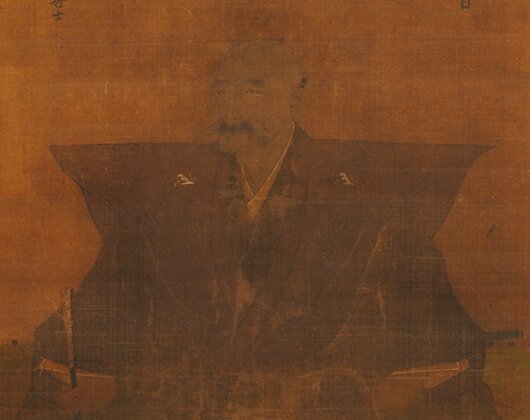
Color painting of Saito Dosan on silk (owned by Jozai-ji Temple)
Saito Dosan
It is said that the one who laid the foundation for the city of Gifu wasn’t actually Oda Nobunaga, but the previous master of Inabayama Castle (current Gifu Castle), Saito Dosan. In the Taiga drama, “Awaiting Kirin”, Dosan is portrayed as young Akechi Mitsuhide’s master.
Known as a soldier of fortune during the Sengoku period, this feudal lord is also well known as the main character in Ryotaro Shiba’s novel, Kunitori Monogatari. After serving the Toki Clan, the clan of the provincial governor, he exiled their head, Toki Yoriaki, and had Mino Province in the palm of his hands. In order to perform construction on Inabayama Castle, located at the summit of Mt. Kinka, and the residence located at the foot of the mountain, he moved Inaba-jinja Shrine from the foot of the mountain to its current location. He ordered the peasants of Inokuchi Village, located in his castle town on Nanamagari-dori Street (the current Honmachi area), to build more houses, and he moved townspeople from Okuwa (current Yamagata City) to Hyakumagari-dori Street (the current Kamiokuwa-cho area) to expand the city. The city building that Dosan started was continued by the man who married his daughter, Nohime, and became the next lord of the castle, Oda Nobunaga. Even today, his legacy still lives on.
In 1554, Dosan’s son Yoshitatsu succeeded his father as head of the family, but shortly after they came into conflict in 1556, Dosan was defeated at the Battle of Nagaragawa on April 2nd.

Color painting of Oda Nobunaga on paper
Choko-ji Temple (owned by the temple, located in Toyota City)
Photograph provided by the Toyota Museum of Local History
Oda Nobunaga
The most famous of the Sengoku period generals, Oda Nobunaga, was the second son of the house elder of the Kiyosu Oda family, Oda Nobuhide, and was born in Shobata Castle in Owari and raised in Nagoya Castle. After marrying Nohime, the daughter of Saito Dosan, he became head of the family and shortly after sought to consolidate Owari.
In 1567, Nobunaga, who had taken control of the castle, changed the name of the region from Inokuchi to Gifu as well as making a declaration to unify the nation by force in order to achieve his dream of ruling the entire country. It was around this time that Akechi Mitsuhide came into the service of Nobunaga.
Creating the Rakuichi-rakuza (free markets and open guilds) policies, protecting cormorant fishing, one of Gifu’s most famous tourist attractions, and encouraging hospitality are all aspects of Nobunaga’s legacy that are still visible in Gifu City today.
In 1576, Nobunaga turned over control of Gifu Castle to his eldest son Nobutada and moved to Azuchi Castle. Then, in 1582, he was betrayed by Mitsuhide in the Honno-ji Incident, and the story of his life came to a close.
About the Taiga Drama Museum
- Exhibit Period
- 01/11/2020 - 02/14/2021
- Hours of operation
- 9:00 - 17:00
- Fees
- Adults: (highschool and up) 600 yen (groups) 480 yen
Elementary school and junior high school students: 300 yen (groups 240 yen)
*The group discount applies to groups of 20 or more
- Address
- Gifu City Museum of History 2nd Floor, 2-18-1 Omiya-cho, Gifu City Japan (within Gifu Park)
- Organizer
- “Awaiting Kirin” Taiga Drama Gifu Executive Committee (Gifu City Attractiveness Promotion Department, Taiga Drama Promotion Division)
- Contact
-
Awaiting Kirin Gifu Taiga Drama Museum (9:00 - 17:00)
Tel.
Fax.
Photo gallery





